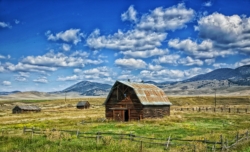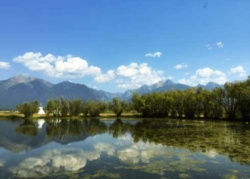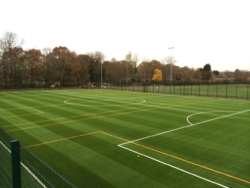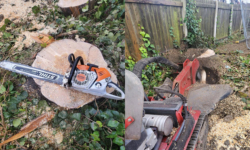It’s critical to pick the ideal lawn grass variety for your specific region. It doesn’t matter where you reside. You should never gamble when hand-selecting a lawn grass variety. If you live in the vast western state of Montana, you’ll need to familiarize yourself with the lawn grass varieties that are optimal for its residents. Taking the time to study and adequately prepare for the seeding process can help you determine the tools and materials you’ll need to purchase best grass seed for Montana grass through reputable grass seed retailers like Nature’s Seed.
For those homeowners hoping to discover which kind of lawn grass is optimal for Montana’s cool summers and mild winters, dedicate the time necessary to research environmental components like heat tolerance, shade tolerance, sunlight tolerance, and even soil conditions. It can also help tremendously to consider genetic factors, including resistance to diseases, sod density, and coloration. Don’t forget to account for watering needs in your decision, as well.
Budding lawn care enthusiasts interested in easy-to-follow, low-maintenance lawn care defined by modest fertilization, sunlight exposure, and irrigation may want to consider Kentucky bluegrass, perennial ryegrass, and fescue grass.
The eastern part of Montana is chock-full of grasses that fall under the semi-dry land classification. Lawn grasses that are part of this category work well with sheep fescue, hard fescue, and similar varieties.
Note that these lawn grass varieties in Montana vary in their textures and growth patterns. With this in mind, homeowners should always plant them independently and refrain from growing them in clusters.
Type of Grass in Montana
1. Kentucky bluegrass
What makes Kentucky bluegrass a sturdy and reliable option for outdoor spaces in Montana? For one, it’s often thought to be a durable turf grass that can withstand cold climatic conditions. This grass type is ideal for homeowners who appreciate textured, natural-looking lawns. People often flock to Kentucky bluegrass due to their ability to conceal sparsely-covered areas of their yard. As an additional benefit, it also doesn’t require reseeding.
Generally speaking, Kentucky bluegrass tends to endure Montana’s winter season’s harsh conditions a lot more effectively than other cool-season options out on the market. New kinds can usually hold their own against infectious diseases, as well and that’s why Kentucky is best grass for montana.
Before purchasing, note that bluegrass thrives in the presence of full sunlight exposure. Despite its preference for direct light, some homeowners opt to combine Kentucky bluegrass with fine fescue when seeding in shady areas of their front or backyard. After planting, Kentucky bluegrass generally requires between one and three months for germination and settling. This waiting period can vary based on site circumstances.
If you’re a future seeder with a confirmed interest in Kentucky bluegrass, note that this type of lawn grass works well in athletic fields with low traffic. With its remarkable resiliency and attractive color sure to wow a crowd of fans, you can establish Kentucky bluegrass in any baseball infield.
2. Perennial ryegrass’s compatibility with Kentucky bluegrass
In many instances, Montana residents blend Kentucky bluegrass with different cool-season favorites, including perennial ryegrass. The perennial ryegrass establishes quickly, which complements the bluegrass’ decreased establishment period.
Perennial ryegrass also boasts a fine texture that’s aesthetically pleasing. More practically, this type of grass can tolerate the side effects of droughts particularly well. Although it doesn’t always cope with winter conditions as well as Kentucky bluegrass, it’s a staple in many southern Montana lawns.
3. Fine fescue
Fine fescue is a kind of turfgrass that consists of fine-textured leaves. This type of lawn grass tends to do well in places that don’t have high fertility or in areas with relatively low soil moisture. If you’re searching for grasses that thrive in areas with unbalanced pH levels, fine fescue lawn grasses are likely the solution you’ve been waiting for.
Unlike other lawn grasses, fine fescue can even flourish in the shady areas of your backyard. If you live in a region with adequate drainage and sandy soil, then you may want to consider taking the fine-fescue pathway seriously. It can be wise to introduce a little bit of sand to the upper part of the soil, as you’re preparing the area for seeding. If you care for fescue grass as recommended, you may be able to achieve that picturesque Montana turf of your landscaping dreams. However, before seeding, note that this lawn grass rarely seeds independently.
Conclusion
To ensure optimal lawn grass growth, you’ll need to assess your area’s climatic conditions and record essential details such as aridity. Because Montana is a relatively large state, so for best grass in Montana, you’ll need to factor your specific location into your decision. If you’re in an inland region that’s both arid and cool, cool-season grasses may be ideal. If you’re located east of the scenic Cascade Mountains, it may be prudent for you to look into both tall fescues and bluegrasses.
Researching optimal grass options in Montana will help you make decisions with a higher degree of confidence. Guessing will never yield satisfactory results. When visiting your local greenhouse, choose lawn grasses wisely and thoughtfully.






